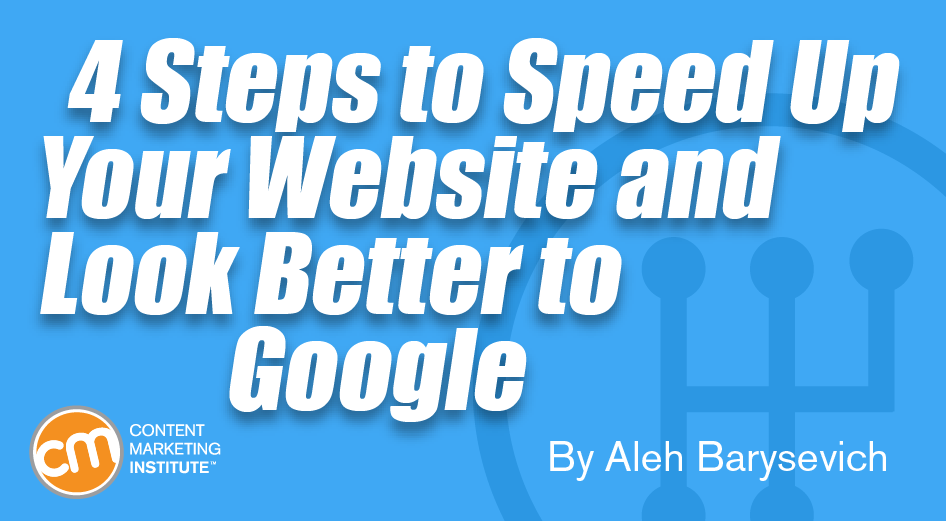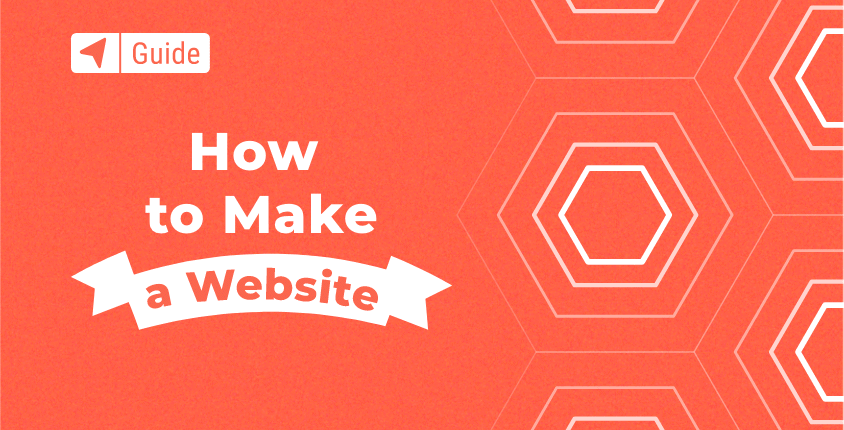
How To Create A Website: Step-By-Step Beginner's Guide • GigaPress
How To Create A Website: Step-By-Step Beginner’s Guide
by Brad Merrill
Share on FacebookShare on Twitter
How often have you thought about creating a website, but just weren’t sure where to begin?
Building a website is easier than you might think, and we cover the entire process, step-by-step, in this tutorial.
If you’re ready to create a new online presence—for yourself, your business, or a side project—today is the day.
QUICK NAVIGATION
- How To Create A Website: Video Tutorial
- Step 1: Choose A Platform For Your Website
- Step 2: Get A Domain Name & Hosting Account
- Step 3: Install WordPress On SiteGround
- Step 4: Log Into Your WordPress Dashboard
- Step 5: Customize Your Basic Site Settings
- Step 6: Install A WordPress Theme
- Step 7: Customize Your Theme
- Step 8: Add Content To Your Website
- Step 9: Customize Your Sidebar & Widget Areas
- Step 10: Install Plugins For Added Functionality
- Frequently Asked Questions
In this guide, you’ll learn how to create a beautiful website quickly and easily, without having to learn HTML/CSS and without writing a single line of code.
You’ll also learn how to avoid some of the unnecessary costs of building a website. You don’t need an expensive website builder!
This comes from our experience building dozens of websites over the last 10+ years, including this one! We know what works, and we’re here to walk you through every step of the process.
There’s a lot of information here—so feel free to bookmark this page and return to it as you move through the steps.
And of course, if you have any questions along the way, just leave a comment below this article and we’ll do our best to help you out.
Sound good? Let’s dive in!
How To Create A Website: Video Tutorial
Prefer to watch instead of reading? We’ve converted this entire guide to a video on our YouTube channel:
(Click here for the discount mentioned in the video.)
If you prefer text, read on! Each step is covered in detail below.
Step 1: Choose A Platform For Your Website
There are so many different platforms and website builders out there, and choosing the right one can feel a bit overwhelming.
WordPress, Drupal, Squarespace, Joomla, and Wix are just a few examples.
(You could also code a website yourself from scratch, but that would take much longer, and you probably wouldn’t love the end result.)
So which website builder should you use?
Well, let’s take a look at what other people are using.
The Most Popular Website Builders
According to BuiltWith, here’s a breakdown of website builders by market share:
As you can see, WordPress leads the pack with a solid 52% of the market, followed by Wix (7%), Progress Sitefinity (5%), Squarespace (4%), and Joomla (3%).
Why We Recommend WordPress
It’s no coincidence that WordPress holds such a strong lead—it offers a number of advantages over other website builders.
- WordPress is completely free. While you’ll still need to purchase a domain name and a web hosting account, there is no cost associated with WordPress itself (unlike many other website builders, which can be quite expensive).
- WordPress is extremely powerful. Whether you’re starting a blog, creating a business website, or building a full-fledged e-commerce store, WordPress can handle just about anything.
- WordPress is easy to use. Even if you’re a total beginner, it doesn’t take long to get comfortable using WordPress—and you don’t need any coding knowledge to build a great website.
If you’re just getting started, we strongly suggest going with WordPress.
With that said, you can always change your mind later! Most web hosting services offer one-click installations for a variety of website builders, including WordPress, Joomla, and Drupal—which are all free.
Step 2: Get A Domain Name & Hosting Account
Before you can start your website, you’ll need a domain name and a web hosting account.
- Your domain name is your website’s unique web address, e.g. yoursite.com
- Your web host is the service that stores your website’s files and connects it to the public Internet
You can get both of these from SiteGround, which is arguably the most reputable and well-respected hosting provider in the industry. It’s what we use here at GigaPress, and it’s the only service I recommend to new website owners. (To learn why, you can read our full SiteGround review here.)
By using the link below, you can get started for as low as $3.95 per month (as opposed to the regular price of $11.95).
—> Click here to head over to SiteGround and pick your hosting plan:
Which Hosting Plan Is Right For You?
SiteGround has three main hosting plans: StartUp, GrowBig, and GoGeek.
- StartUp — If you’re just getting started, this plan should be more than enough for you. It supports one website and up to 10,000 visits per month.
- GrowBig — This plan is a great value if you want to create multiple sites under a single account. It supports unlimited websites and up to 25,000 visits per month.
- GoGeek — This plan is really powerful, but it’s probably overkill if you’re just getting started. It supports unlimited websites and up to 100,000 visits per month.
Not sure which plan to choose?
If you only need one site, go with StartUp. If you need multiple sites, choose GrowBig. Don’t worry, you can always upgrade later as your website grows.
Go ahead and click the Get Plan button to get started.
Choosing Your Domain Name
On the next page, you can register a domain name for your new website:
This is where people will find your site on the web—for example, yoursite.com.
How To Choose A Good Domain Name
If you haven’t decided on a name for your website yet, here are a few tips:
- Go for .com if you can. The extension doesn’t really matter, but many people still trust .com and .net the most.
- Make it brandable. This means your domain should be unique, easy to memorize and pronounce, and trustworthy.
- Use only words. Generally, you’ll want to avoid using hyphens, and only use numbers if they’re part of your brand name (for example: 9to5Mac.com).
If you’re having trouble coming up with good ideas that aren’t taken, here’s a process I like to use:
- Make a list of random words related to your topic or niche.
- Run each of those words through Thesaurus.com to get some synonyms, and add those to the list.
- Throw in some other words that aren’t necessarily related to your topic: adjectives, prefixes, suffixes, words you just happen to like, etc.
- Spend some time playing with different combinations of the words on your list to see what works and what doesn’t.
You can also look at other websites in your industry and draw inspiration from them.
If you’re really stuck, you can try using one of these name generators:
Once you’ve decided on a name, go ahead and enter it into SiteGround and click Proceed.
Almost There…
Finally, you’ll need to enter some information to create your SiteGround account and process your payment:
At the bottom of this page, you have the option of choosing a billing period of 12, 24, or 36 months:
Important Note: The discounted price will be locked in for whatever period you choose, after which it will return to the normal retail price. The longer the billing cycle, the more money you’ll save over time. I would strongly suggest going with a period of at least 12 months, or longer if you’re comfortable with the upfront cost.
Finally, SiteGround will offer you a few “Extra Services.”
- Your domain name registration will be automatically included.
- I would recommend adding Domain Privacy, which ensures that spammers, telemarketers, and random Internet crazies can’t look up your contact info and address in the public domain records. When you add the Domain Privacy service, SiteGround will effectively act as your agent, using their address and contact info in the public records for your domain.
- I usually skip SG Site Scanner. You don’t need to pay $20/year to keep your website secure.
Once you’re satisfied with your options, click the Pay Now button.
You may be prompted to verify your phone number or email address. As soon as you’ve done that, click Proceed To Customer Area.
Step 3: Install WordPress On SiteGround
When you log into the SiteGround customer area, you should see a welcome message inviting you to create or migrate your website:
To get started, click the Set Up Site button.
On the next page, select “Start New Website,” and choose WordPress as your application:
At the bottom, you’ll create your WordPress admin account by entering an email address and password. These are the credentials you’ll use to sign in and manage your website.
Next, click Continue.
You’ll likely be asked again if you want to add the SG Site Scanner service. You do not have to do this.
Now just click Finish, and in a few moments your website will be up and running.
Before we move on, let me be the first to congratulate you…
You just took a major first step. You literally have a live website up and running now. Seriously—open up a new tab and type in your domain name.
It’s not much yet, but it’s there!
Next up, it’s time to customize your new site.
Step 4: Log Into Your WordPress Dashboard
From now on, you’ll be managing your website from your WordPress dashboard, which you can find by adding /wp-admin/ to the end of your domain name. For example: yourdomain.com/wp-admin/
Log in using the email address and password you chose in the previous step.
The first time you log into your dashboard, SiteGround will provide a wizard that walks you through some of the initial setup stuff.
You can go ahead and choose a theme:
Don’t worry about picking the perfect theme just yet. You can always switch later, and in fact we’ll talk more about themes later in this guide.
In the next two steps, SiteGround will suggest some popular free plugins that you may want to install:
Plugins are essentially addons that extend the functionality of your website.
You can feel free to add any of these—but we’ll also discuss plugins more in a later step, so don’t feel obligated to install anything just yet.
Once you complete the onboarding wizard, your WordPress dashboard will look like this:
This is where you’ll manage every part of your website, from your theme and appearance to your pages, blog posts, settings, and so on.
At first, you may feel overwhelmed by all the various menus and options—but don’t worry, it doesn’t take long to get comfortable with WordPress.
Remember: you can always access your WordPress dashboard by going to yourdomain.com/wp-admin/.
Step 5: Customize Your Basic Site Settings
Now that your website is up and running, there are a few basic settings you’ll want to customize to your liking.
Start by navigating to Settings > General in the main WordPress Menu.
On this page, you can change your site title from the default placeholder.
You can also add a short tagline, which may show up in various places on your site. This is optional—you can just delete the placeholder text if you’re unsure.
Finally, be sure to set the timezone to match your local time.
When you’re happy with these settings, scroll down and click Save Changes.
Step 6: Install A WordPress Theme
Now it’s time to make your website look beautiful.
One of the reasons I love WordPress is because it’s ridiculously easy to customize your website and build something truly unique. That’s made possible by themes.
WordPress themes determine how your website looks. They don’t change your content itself (posts pages, etc.), but they do change how that content is displayed on your site.
As an example, you could go from this:
…to this:
…in just a few clicks.
WordPress comes with a default theme that gets an overhaul about once a year. As you’d expect, it’s compatible with most of the things you’d want to do with a WordPress site.
However, I would advise most people not to use the default theme that comes with WordPress. That’s not to say it’s a bad theme—it’s just hard to stand out and brand your business/project if your site looks the same as thousands of others.
So, then, how do you find a good theme for your website?
I’m glad you asked…
Free Themes From WordPress.org
WordPress has a massive community of theme developers, many of whom release their themes for free on WordPress.org.
There are thousands of free themes available, and many of them are quite good.
You can view and install free themes through your own WordPress dashboard by going to Appearance > Themes, and clicking the Add New button at the top:
There are themes for just about anything, whether you’re building a business site, a blog, an e-commerce store, or something else entirely.
When you find a theme that piques your interest, you can click on it to see a more detailed description and a rough preview. If you like
it, you can click Install to add it to your site, and then Activate to immediately make it your active theme.
(Note that some themes may require a bit of customization before they look exactly like the thumbnail image. More on that below.)
Premium Themes
In addition to the free themes from WordPress.org, there’s a whole world of premium themes that you can buy from third-party sellers and marketplaces.
Again, there’s nothing inherently wrong with free themes, but a premium theme can be a great investment if you want a high-quality design and ongoing support from the developer—which is usually included in the purchase price.
Here are a few of my favorite places to get premium WordPress themes:
- ThemeForest — A huge marketplace where independent developers sell their themes
- StudioPress — One of the most reputable theme vendors in the business
- GeneratePress — A lightning-fast multipurpose theme that can be customized for nearly any purpose (check out their demo sites)
When you purchase a premium theme, it will usually be delivered as a .zip file, which you can install directly through your WordPress dashboard.
Just go to Appearance > Themes, click Add New, and then click Upload Theme:
From there, just upload the .zip file, and you’ll have the option to preview or activate your new theme right away.
Step 7: Customize Your Theme
Chances are, even the best theme won’t look exactly the way you want right out of the box. You’ll need to do some tweaking.
Luckily, WordPress has a great feature where you can customize your site’s appearance while viewing a live preview, so you can see the effects of your changes in real time.
After you’ve chosen a theme, go to Appearance > Customize to open the WordPress customizer.
On this screen, you’ll see a number of appearance options in the left sidebar, with a live preview of your site on the right.
Every theme has its own unique options in the customizer, from typography to colors, layout options, and more. You’ll definitely want to spend some time going through these settings and tweaking them until your site looks just right.
Note: If your site doesn’t have any content yet, it may be hard to visualize exactly how the end result will look. You may want to come back to the customizer later, after you’ve added some posts and pages.
Step 8: Add Content To Your Website
While design is important, the most crucial part of any website is its content.
By default, WordPress supports two main types of content: pages and posts.
- Pages are typically used for permanent, static content such as your “About” page and “Contact” page.
- Posts are displayed on your blog in reverse-chronological order, and they usually have a date, categories, and tags associated with them.
Creating A Page
Let’s start by creating a page.
To do this, open up your WordPress dashboard and go to Pages > Add New.
You’ll see a content editor that looks something like this:
It may look slightly different depending on your theme, but the functionality is the same.
Go ahead and enter a page title and some content. It doesn’t have to be perfect yet—you can always edit it later.
The editor divides your content into “blocks,” which are basically little chunks of content like paragraphs, headings, images, tables, etc.
By default, every time you press enter/return, a new paragraph block will be created. This is exactly like writing in any other text editor.
However, if you’d like to add some other type of content, such as a heading or an image, you can click the + icon on the left side to choose a different block:
Notice that the sidebar on the right side provides various options for each type of block.
The sidebar also has a “Document” tab where you can edit a few settings for the page as a whole:
When you’re ready, you can click Publish to publish your page immediately, or Save Draft if you want to come back and finish your work later.
If you click Preview, you’ll see a live preview of what this page will look like on your website.
You can view and edit your existing pages at any time by going to Pages > All Pages.
Creating A Menu
Once you’ve created one or more pages, you may want to add them to your site’s navigation menu.
You can manage your menus by going to Appearance > Menus in your WordPress dashboard.
From there, click “create a new menu” and give it a name, then use the options on the left to add whatever items you want:
You can also edit the display labels of any pages you add to the menu.
Once you’ve added some pages to your menu, be sure to select at least one “Display location” at the bottom. This determines where the menu will actually appear on your website.
Creating A Post
The process of creating a post is very similar to creating a page.
Go to Posts > Add New to create your first blog post.
As you can see, the post editor is nearly identical to the page editor.
The main difference is that you have the option to add categories and tags, which are used to organize your blog posts by topic.
See also: How To Start A Successful Blog: The Definitive Guide
This is our all-inclusive blogging tutorial where we discuss not just how to build a website, but how to create amazing content, drive traffic, and make money.
Setting A Static Front Page
By default, your website’s homepage will show your latest blog posts in reverse-chronological order.
If you would prefer to have more control over what people see when they first land on your site, you can opt to use a static homepage instead.
To do this, you’ll need to create two new pages:
- A homepage — This will be your actual custom homepage. Feel free to customize it however you like.
- A blog page — Because your homepage will no longer show your blog posts, you’ll want to create a separate blog page. You can simply create a blank page and title it “Blog” or something similar.
Then go to Settings > Reading in your WordPress dashboard:
In the section that says “Your homepage displays,” select “A static page.”
Then specify the homepage and blog page that you just created, and save your changes.
Once you’ve done this, your custom homepage will be the front page of your website, and the blank “Blog” page will now display your latest blog posts.
For some more tips on how to do this properly, check out our article on How To Edit Your Homepage In WordPress.
Step 9: Customize Your Sidebar & Widget Areas
If your WordPress theme has a sidebar, you can customize what shows up there by using “widgets.”
Widgets are small blocks of content that perform a specific function, such as displaying your latest posts, archives, social media profiles, a search box, or even just custom text:
They are most commonly used in sidebars, but many themes also have widget areas in other locations, like the footer.
You can manage your widgets in the WordPress customizer by going to Appearance > Customize and navigating to the “Widgets” section.
Step 10: Install Plugins For Added Functionality
One of the biggest selling points of WordPress is its extensibility.
With the right plugins, you can make your website do just about anything.
Plugins range in their scope from simple modifications like adding social media buttons to your blog posts, to more complex things like turning your site into a full-fledged social network.
There are tens of thousands of plugins available for free from WordPress.org.
Like themes, you can install plugins directly through your WordPress dashboard, without downloading anything. Just go to Plugins > Add New, and either browse the recommended plugins or search for whatever you need.
To get you started, here are a few plugins we recommend installing:
- Yoast SEO — This plugin does all sorts of things to make your website more SEO-friendly, to help you rank higher in search engines like Google. (Check out our WordPress SEO tutorial for tips on how to set it up.)
- GA Google Analytics — This plugin makes it super easy to add your Google Analytics tracking code to all pages on your site, so you don’t have to do it manually.
- Contact Form 7 — An easy way to add contact forms to your posts and pages.
After you install and activate a plugin, it will usually add a new link somewhere in your WordPress menu where you can manage its settings.
For example, Yoast SEO adds a new SEO menu:
Frequently Asked Questions
Here are the answers to a few common questions we often hear about creating a website. (Click to expand.)
How much does it cost to build a website?
If you use WordPress, the only required costs are your annual domain registration fee and your web hosting account.
With SiteGround, a .com domain name registration is $15.95 per year, and if you use this discount link, their web hosting packages start at just $3.95 per month.
If you choose to purchase a premium WordPress theme, they typically run from $30–70 as a one-time purchase.
All in all, it is completely feasible to build a beautiful, functional website with less than $100 USD invested upfront.
Do I need to know how to code to build a website?
Do I need any special software to build a website?
Can I create a website from my phone?
Can I keep my website private while I’m still working on it?
Can I add other users to my website?
How can I get my website to rank on Google?
How can I make money from my website?
How can I add an online store to my website?
The Next Steps
At this point, we’ve covered all the major steps to creating a website, and you’re well on your way to building something great.
Don’t get discouraged if you run into any problems! There are plenty of resources here on GigaPress and around the web.
Be patient and keep at it—you’ll master this stuff in no time.
If you have any questions about building a website, or if you run into problems along the way, please feel free to leave a comment below!
Site5 Hosting Review: Does It Offer Anything Unique?
7 Things To Consider When Choosing A Web Hosting Service










